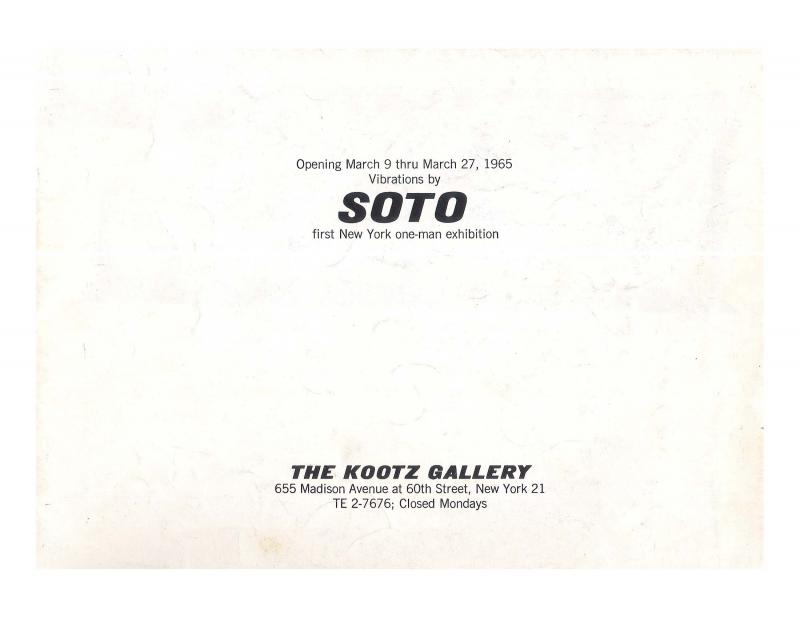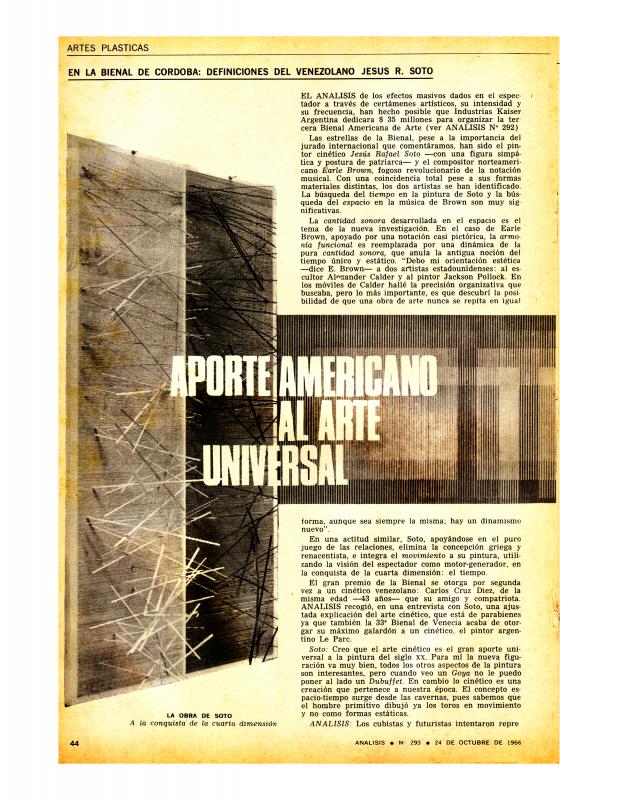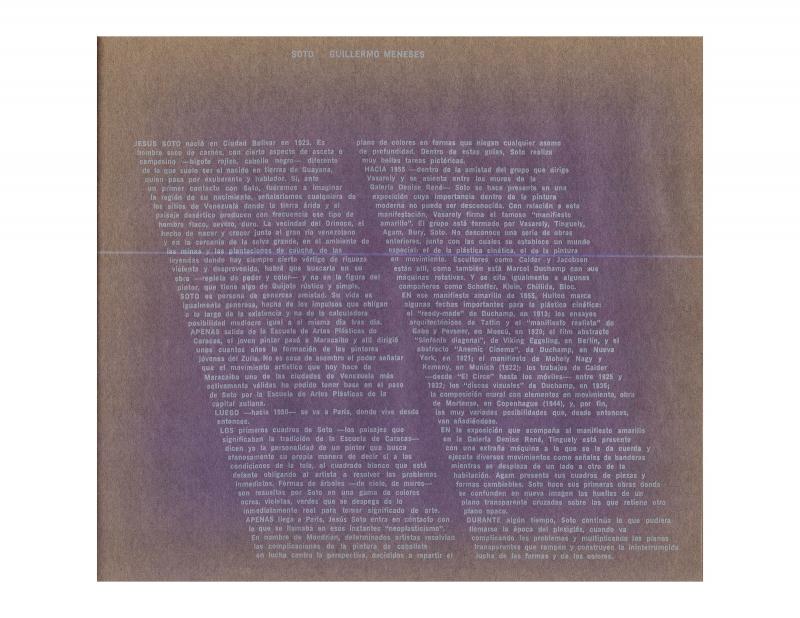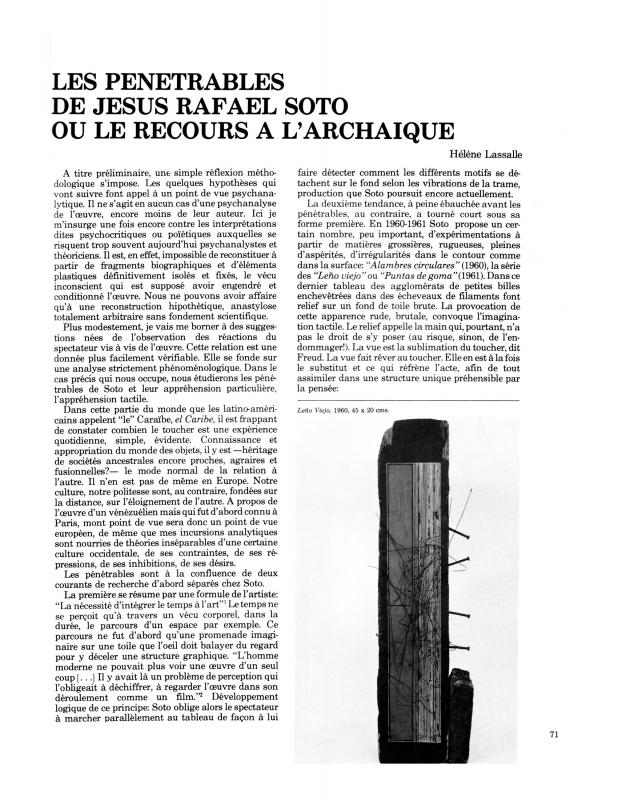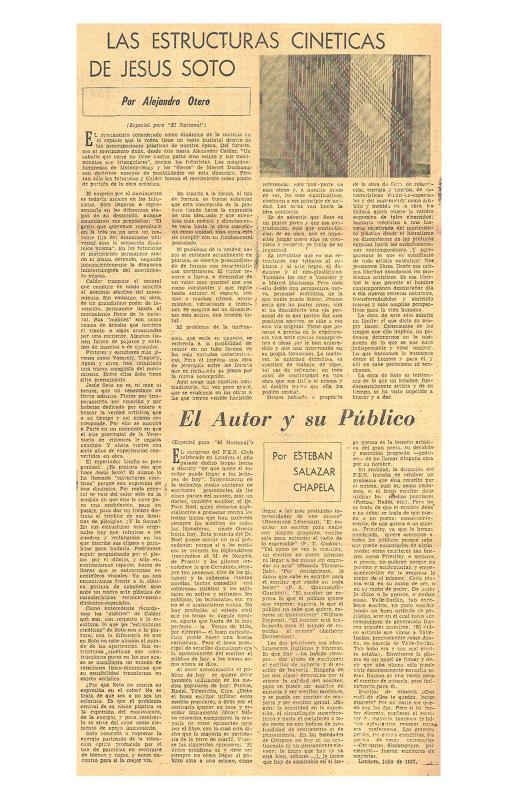The catalogue to the exhibition, Soto:Estructuras Cinéticas, presented at the Museo de Bellas Artes de Caracas in 1957—the first solo show of Venezuelan artist Jesús Soto (1923–2005) held in Caracas, or for that matter, anywhere outside Europe—revolves around three texts. Although brief, the texts are fundamental insofar as they provide first impressions of an artist at the forefront of abstract Kinetic art. The three texts address an early yet crucial stage in Soto’s work: he was still using transparent Plexiglas as a means of layering planes, though the artist would soon abandon that material, which because it is reflective, added elements to the work that Soto had not intended and interfered with the perception he was seeking. As a result, Soto began working with opaque materials and metal. Primarily known as a writer, Guillermo Meneses (1911–78) was also an art critic; he was very close to the Venezuelan contemporary art scene, especially its newest tendencies and concerns. Meneses places emphasis on Soto’s determination to overcome difficulties inherent in contemporary art. Finally, Meneses discusses the polemic underway about the validity of the abstract movement as a legitimate idea in contemporary art, one in no way connected to traditional figurative art. In his text, Venezuelan architect Carlos Raúl Villanueva (1900–1975) explains why Soto had collaborated with him on the Síntesis de las Artes project at the Ciudad Universitaria in Caracas that year, specifically on the Estructura Cinética [Kinetic Structure] located in the school of architecture. Hungarian-born French artist Víctor Vasarely (1906–1997) met Soto when he traveled to Paris in the early fifties, and they became friends. While both artists were of the same generation and shared similar concerns, their projects did not fully harmonize: Soto’s primary interest was in developing a strain of abstraction wholly independent of form, that is, work whose sole point of interest was the connection between its elements, rather than the elements themselves, whereas Vasarely was focused on “enriching form” in a drawing-based strain of abstraction. Nonetheless, in 1957, Vasarely—like Soto—was one of the artists invited by Villanueva to develop a project for the Ciudad Universitaria in Caracas that was geared to integrating all art forms. For other critical texts on Soto’s work, see “Sin título” [catalogue text for the “Vibrations by Soto” show held at The Kootz Gallery in 1965] (doc. no. 1069781); “En la Bienal de Córdoba: Definiciones del venezolano Jesús R. Soto. Aporte americano al arte universal” (doc. no. 772726); “Soto” (doc. no. 1080690">1080690); “Les pénétrables de Jesús Soto ou le recours a l'archaïque=Los penetrables de Jesus Rafael Soto o el recurso de lo arcaico” (doc. no. 805856); “Las Estructuras cinéticas de Jesús Soto” (doc. no. 850667); Guillermo Meneses, “Soto” (doc. no. 1080690">1080690)].

